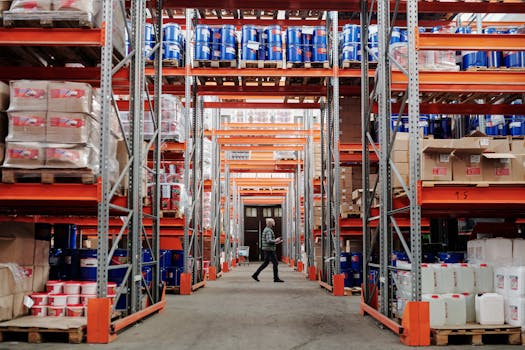Smart Fitting Rooms and Inventory: Never Miss a Sale Due to Stock Issues
Fitting rooms have long been a staple in clothing stores, providing customers with the opportunity to try on their desired items before making a purchase. However, as ecommerce and online shopping continue to dominate the retail industry, physical stores are facing challenges in keeping up with the convenience and ease of online shopping. One such challenge is managing inventory and ensuring that customers are always able to purchase their desired items. This is where smart fitting rooms and advanced inventory systems come into play, eliminating stock issues and ensuring that no sale is missed. In this article, we’ll delve into the world of smart fitting rooms and inventory management, and how they are revolutionizing the retail experience. 
The Rise of Smart Fitting Rooms
In today’s fast-paced world, time is of the essence and customers expect convenience and efficiency when shopping. Traditional fitting rooms, with their long queues and limited space, are no longer meeting these expectations. This is where smart fitting rooms come in. These innovative spaces are equipped with technology that streamlines the shopping experience for customers while providing a wealth of data for store owners.
What exactly are smart fitting rooms?
Smart fitting rooms are essentially dressing rooms that are equipped with technology designed to enhance the shopping experience for customers. These technologies include touch screens, mirrors, sensors, and cameras that work seamlessly together to provide valuable insights to both customers and retailers. Some may even come equipped with interactive features such as virtual styling, allowing customers to try on different outfits without having to physically change.
How do they work?
The functions of smart fitting rooms may vary depending on the technology used, but the general process is as follows:
1. Customers select items to try on and bring them into the fitting room. The items are tagged with RFID (Radio Frequency Identification) or NFC (Near Field Communication) tags, which contain information about the product such as size, color, and price.
2. As the customer enters the fitting room, sensors detect the items and display them on the fitting room’s touch screen or mirror.
3. Customers can use the touch screen or mirror to request different sizes or colors, or to complete their purchase.
4. As customers try on different items, sensors are able to track which items are brought into the fitting room and which are left behind, providing retailers with valuable data on which items are most popular and which are not. This information can be used for inventory management and restocking decisions.
The Advantages of Smart Fitting Rooms
Now that we understand how smart fitting rooms work, let’s take a look at some of the advantages they offer for both customers and retailers.
For Customers
– Convenience: Smart fitting rooms save time, allowing customers to try on multiple items without having to physically change. They can also request different sizes or colors without having to leave the fitting room.
– Personalization: With features like virtual styling and suggestions based on previous purchases, customers can enjoy a more personalized shopping experience.
– Speed: With all the necessary information at their fingertips, customers can make quicker decisions, reducing the time spent in the fitting room.
For Retailers
– Increased Sales: By eliminating stock issues and providing valuable data on customer preferences, smart fitting rooms can help retailers increase their sales.
– Better Inventory Management: Smart fitting rooms provide real-time data on which items are popular and which are not, allowing retailers to make informed decisions on restocking and inventory management.
– Improved Customer Experience: With advanced technology and convenience at their disposal, customers are more likely to have a positive shopping experience, leading to increased customer satisfaction and loyalty.
Why Inventory Management is Crucial
The success of a retail store heavily relies on proper inventory management. Accurate inventory tracking and management determine the availability of products for customers to purchase, and ultimately, the store’s profitability. With traditional methods of inventory management, human error, theft, or misplacement of items can result in stock issues, causing a loss of sales and dissatisfied customers. This is where advanced inventory systems, along with smart fitting rooms, come in to eliminate these issues.
The Importance of Real-time Inventory Updates
Unlike traditional methods, advanced inventory systems provide real-time updates on inventory levels. As customers try on and request different items, the system updates the inventory, ensuring that customers are aware of the availability of their desired items. This eliminates cases where customers are disappointed with out-of-stock items and leads to a smoother shopping experience for all parties involved.
Preventing Loss of Sales
With real-time inventory updates, retailers can avoid stockouts and make sure their shelves are always stocked with popular items, reducing the risk of lost sales due to stock issues. This is especially crucial during peak shopping periods, such as holidays and sales events.
Increased Efficiency
Advanced inventory systems not only provide real-time updates but also automate tasks such as restocking and inventory auditing, reducing the time and resources needed for inventory management. This allows store employees to focus on other important tasks, ultimately leading to increased efficiency.
In Conclusion
The retail industry is constantly evolving, and with the rise of ecommerce, traditional methods of management are no longer sufficient. Smart fitting rooms and advanced inventory systems are just a few examples of how technology is revolutionizing the retail experience for both customers and retailers. By eliminating stock issues and providing valuable data, these solutions are paving the way for a more efficient and personalized shopping experience. As the retail landscape continues to change, smart fitting rooms and advanced inventory systems are sure to play a crucial role in the success of physical stores.










